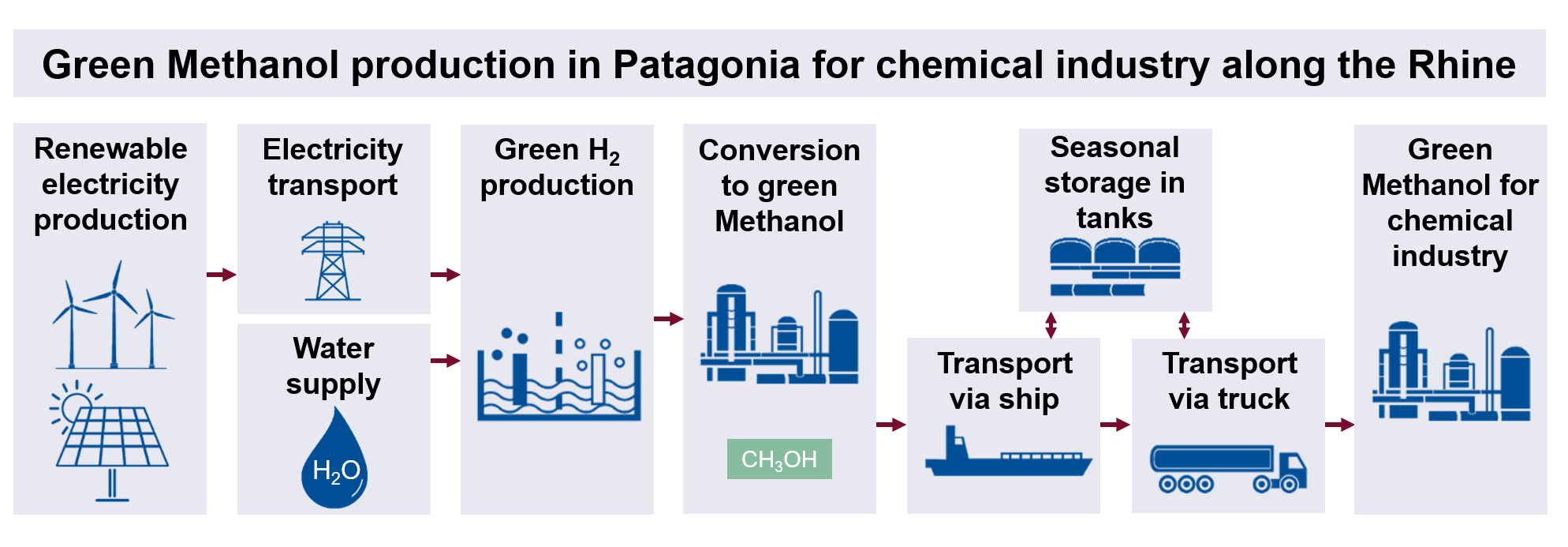3.4 Hydrogen Supply Chains
After you have learned about the different technologies for storing and transporting hydrogen in the previous two sections, you will learn in this last part of the chapter what future supply chains for green hydrogen could look like. The term hydrogen supply chain describes the entirety of all process steps and the technologies applied between the production of the initial raw materials (e.g. renewable electricity) and the end use of the hydrogen or the derivative.
4. Example 3: Transport of green methanol

Due to its good transport properties, green methanol may also be imported from very distant regions in the future. Since methanol, unlike liquid hydrogen, can be transported by ship almost without losses, the transport costs barely contribute to the overall costs, irrespective of the distance to be covered. For the supply chain illustrated here, Patagonia was chosen as an exemplary export region, where green hydrogen and its derivatives can potentially be produced at low cost due to very favourable wind conditions.
In the schematic representation of the supply chain, the supply of carbon dioxide for methanol synthesis was neglected for reasons of clarity. However, the availability of green carbon dioxide may be an important criterion for the selection of sites for the production of green methanol in the future. It is conceivable, for example, that regions that have a large biomass potential - and thus at the same time a high availability of green carbon dioxide - have decisive location advantages with regard to the production of green methanol compared to regions without such a biomass potential.